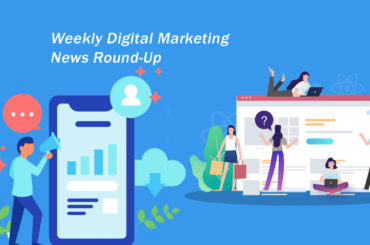In the B2B niche, the first spot on search engines is even more lucrative than in B2C. Companies keep competing for the highest rankings. However, the strategies keep changing due to Google algorithm updates, industry findings, user behavior changes, and more.
If you want to grow your B2B enterprise through top rankings, you have to establish and implement SEO best practices to impact your SEO strategies positively.
Understanding what search engines want will improve your lead quality, help you gain brand exposure, and understand your target audience and their search intent.
Here are five SEO best practices your B2B business needs to conquer search engines:
1. Match Your Content with User Intent
Content is the bridge that connects users to what you’re offering. You have to understand what users are looking for online and tailor your content to their needs.
The first step is keyword research. This process is all about aligning your content with the potential user search intent.
This allows you to figure out what keywords people use when browsing the internet and what they wish to do with the information they find.
Taking these insights and applying them to your content will ensure that your website shows up at the right time in front of the right people.
Also analyze the web pages that appear first in the search engine results, since they most likely answer the searcher’s questions. Try to cover different intents and topics with the content on your website.
That way, you make sure you are exhausting all stages of the sales funnel, filling various content gaps, and targeting several user intents, whether informational or transactional.
Let’s say you are a B2B SaaS enterprise offering time tracking software. You should avoid publishing transactional content only, such as selling your time tracking software. Instead, include posts covering broader topics on your blog.
Think about all the problems your target user has. If it’s an HR manager, you can also benefit from writing about employee engagement, management, human resources, laws, and regulations.

2. Make Sure You Leverage Schema Markup
Google has to deliver the most relevant search results for users to remain the best search engine. This means that your web page will only be ranked if it offers content that pleases users. When you consider how Google delivers its results, you know that schema mark-up is essential for your B2B business.
To leverage schema, you have to:
- Use AMP results. AMP (Accelerated Mobile Pages) is a Google open-source framework. It helps marketers improve user-experience by enhancing web page speed for mobile readership. Optimizing your pages to load faster by implementing AMP boosts SEO and CTR (click-through rates). Mobile users can browse through your website and find what they need faster.
- Create rich snippets that will add insights to the search results.
- Have answer boxes that will guide users in finding the exact solutions they’re looking for.
- Include reviews from clients.
Schema enables search engines to understand your website. It will also ensure that your brand displays correctly to the user. Your business will appear for Google rich snippets and answer boxes when showing results based on such a schema.
Optimizing your content to be featured in the Rich Answer Box on Google increases your visibility in search results. When you emphasize complex questions your audiences need answers to, schema will surface your content on SERPs more often.
By leveraging schema mark-up, your SEO visibility score will increase. You’ll achieve your marketing or business goals faster. Use schema to provide more details about products and reviews from other customers.
3. Set Realistic Goals
Your goals should comprise both content marketing and SEO to build a strong foundation for your e-marketing programs. These goals should be very specific, measurable, achievable, realistic, and timelined.
With particular objectives, you’ll know what you want for your B2B business – more exposure, traffic, and leads and sales. Make sure your goals are clear and connected to your business objectives.
For example, if you’d like to increase the number of customers, then you may want to drive traffic to your web pages and create a lead magnet on those pages to help attract leads. The next step is to nurture the leads through a sales funnel and ultimately convert them into sales.
In digital marketing, everything is measurable through analytics. But still, you need to be specific with your SEO goals to understand how to measure them and see if they correlate with your improved B2B results.
When planning your goals, you should aim high but not too high for them to be unattainable. Consider your SEO feasibility – will you manage to target those keywords you’re after? Are you on first-page ranking as your competitors? Do you have enough resources to enable you to achieve your goals?
To set realistic goals, you should first understand the search results for the search phrases you target. With well-planned location pages, you can generate first-page visibility that your B2B business needs. Ensure the traffic or keywords you are targeting are relevant to the services or products you are offering.
When setting your SEO goals, time matters a lot. Remember, you’ll need to carry out vital processes, including keyword research, competition analysis, content writing and publishing, link building, social media marketing, and more.
Each of these activities needs to be done carefully and to the best quality possible. This is why you may want to set a specific duration to each activity and watch the progress with time.

4. Optimize to Local Business Listings
Google is now factoring local results. It’s good to optimize your listing so that users and search engines can locate updated details about your B2B business. This step alone can net you quality leads.
Local business pages and business profiles can improve your search visibility. Your goal should be to complete your profile, make it consistent, and find opportunities to link to your website. You can use MozLocal to find opportunities and monitor progress.
A Google study found out that 90% of all B2B researchers use search to research the business purchases when online. They’ll then do another 12 searches before engaging on a particular brand’s site.
Now you see why optimizing local business listings is vital. The more places your website shows up, the easier it will be for customers to engage with your business.

5. Create a Mobile SEO Strategy
With the increase in mobile usage, you should ensure your B2B website is optimized for mobile to connect with a broader audience base. A proper mobile strategy will help you rank your target keywords when prospects are using their mobile devices for search.
Find out if a mobile SEO strategy is fit for your business. You should only consider it if it’s a vital source of traffic. Check your analytics data to see how much organic traffic is streaming in from mobile devices and whether it is increasing.
When you are sure that a mobile SEO strategy will attract users to your business, decide which tactic to apply, such as responsive web design, dynamic serving (through unidirectional or bidirectional redirecting), or using standalone mobile pages.
You can settle on standalone mobile pages, responsive web design, accelerated mobile pages (AMP), or dynamic serving to provide mobile-friendly content that speaks to your target audience and boost your B2B SEO efforts.
Final Word
There are plenty of SEO best practices out there, and many have to be factored in while considering your goals and objectives. Ultimately, the tactics you’ll choose will depend on your unique business needs and your target audience. However, don’t be afraid to try some new tactics if you believe you can use them to your advantage.
You should also know that SEO is a gradual process, and the results you expect may not come right away. It takes time and effort, but your determination will eventually pay off.





